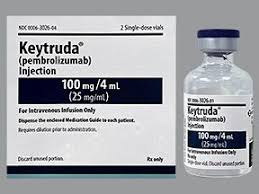Ketamine
Ketamine stands as a remarkable anesthetic and dissociative agent, renowned for its diverse applications in both medical and psychiatric realms. Initially introduced in the 1960s as a general anesthetic, it has recently garnered significant attention for its efficacy in pain management, emergency care. The treatment of depression that resists conventional therapies. Below is an elegant exploration of ketamine, encompassing its applications, mechanisms, side effects, and more.

General Information:
Drug Class: Dissociative anesthetic
Chemical Name: 2-(2-Chlorophenyl)-2-(methylamino)-cyclohexanone
Brand Names: Ketalar, Ketanest, among others
Other Forms: Available in injectable form for medical applications and as a nasal spray for depression treatment.
Mechanism of Action:
Ketamine primarily exerts its effects by inhibiting NMDA (N-methyl-D-aspartate) receptors in the brain, which play a crucial role in excitatory neurotransmission. This inhibition diminishes the activity of glutamate, a neurotransmitter integral to mood regulation, pain perception, and cognitive function.
Beyond its action on NMDA receptors, ketamine also influences various other receptors, including those for opioids and monoamines, potentially enhancing its analgesic and mood-enhancing properties. While the exact mechanisms underlying its antidepressant and therapeutic effects remain partially elusive, it is believed to promote the synthesis of brain-derived neurotrophic factor (BDNF), a vital component for neuroplasticity and cellular development within the brain.
Uses and Indications:
Anesthesia:
General Anesthesia: Ketamine is extensively utilized as an anesthetic for surgical procedures, particularly in urgent medical situations. It induces a dissociative experience, allowing patients to feel a sense of detachment from their environment while maintaining consciousness.
Sedation: It is also employed for sedation in various contexts, including intensive care units (ICUs) and during procedures such as endoscopy or minor surgeries.
Pain Management:
Acute Pain: In emergency settings, ketamine serves as a vital tool for alleviating acute pain, particularly in cases of trauma.
Chronic Pain: For certain chronic pain conditions that do not respond to conventional therapies, ketamine is integrated into a holistic pain management strategy.
Depression and Mental Health:
Treatment-Resistant Depression: Ketamine has gained recognition as a significant intervention for individuals suffering from severe, treatment-resistant depression, exhibiting rapid antidepressant effects often within hours, in stark contrast to traditional medications that may require weeks to manifest benefits.
Suicidal Ideation: This remarkable compound has demonstrated the ability to swiftly diminish suicidal thoughts in select patients, positioning it as a critical emergency treatment for those at elevated risk of self-harm.
Bipolar Disorder and PTSD: Research has also investigated ketamine’s potential in addressing bipolar disorder and post–traumatic stress disorder (PTSD).
Off-Label Uses:
Anxiety Disorders: Ketamine has been utilized off-label to address various anxiety disorders, including generalized anxiety disorder and social anxiety.
Obsessive-Compulsive Disorder (OCD): Emerging studies indicate that ketamine may alleviate symptoms of OCD in certain individuals.
Dosage:
Anesthesia: For anesthetic purposes, ketamine is generally administered through intravenous (IV) or intramuscular (IM) injections, with typical induction doses ranging from 1 to 4.5 mg/kg intravenously.
Depression (Esketamine Nasal Spray): The FDA-approved nasal spray formulation (Spravato) for treatment-resistant depression is given in a clinical setting under supervision, usually commencing with a dose of 56 mg or 84 mg, followed by maintenance doses.
Pain Management: In the realm of pain management, ketamine can be delivered in lower doses via IV or IM injections, typically starting at 0.1-0.5 mg/kg, with adjustments made according to patient response.
Other Forms: Additionally, ketamine is available in oral formulations for off-label applications, though its bioavailability is notably lower compared to IV or IM routes.
Side Effects:
Ketamine may elicit a variety of side effects, both immediate and enduring. These encompass:
Short-term Side Effects:
Dissociation: Users may participation in a sense of disconnection from reality, a characteristic of its stupefacient personal effects , which can also result in confusion, hallucinations, and delirium.
lifted up heart rate and blood constraint : Ketamine can induce temporary spikes in heart rate and blood compulsion , necessitating clinical monitoring during administration.
biliousness and vomiting: These reactions are frequently observed, particularly at elevated dosages.
Drowsiness and giddiness : Recipients may feel groggy, dizzy, or lethargic following treatment.
Vivid dreams or nightmares: Such experiences may arise, mostly with higher doses.
Injection site discomfort: In cases of injection, localized pain or irritation may occur at the site.
Long-term Side Effects:
Strongest matches impairments: Extended or occurring often ketamine use, especially at high doses, can hinder memory, focus, and overall cognitive abilities.
Bladder complications: Chronic use has been linked to ketamine cystitis, a condition marked by bladder inflammation, discomfort, and increased urination.
Psychiatric ramifications: extend use may heighten the risk of psychological dependence, dependence. The worsening of mental health issues, including psychosis or paranoia.
Liver concerns: Some evidence suggests that heavy, long-term ketamine use could potentially harm the liver, though this is less prevalent.
Warnings and Precautions:
Psychiatric conditions: Caution is advised when administering ketamine to individuals with a history of psychosis. Schizophrenia, or other severe mental health disorders, as it may intensify symptoms.
Cardiovascular issues: Those with heart conditions (such as hypertension or arrhythmias) should approach ketamine use with care, given its potential to elevate heart rate and blood pressure.
Abuse Potential: Ketamine is acknowledged for its potential for misuse. Categorized as a Schedule III controlled substance in the United States, attributed to its dissociative and hallucinogenic properties.
Pregnancy: Classified as a Category C medication during pregnancy, ketamine may pose risks to a developing fetus and should only be administered when the anticipated benefits significantly outweigh the associated risks.
Drug Interactions:
Central Nervous System Depressants: The concomitant use of ketamine with other CNS depressants, such as alcohol, benzodiazepines. Opioids, heightens the risk of respiratory depression and sedation.
Antidepressants: Ketamine may interact with specific antidepressants. Particularly serotonin-norepinephrine reuptake inhibitors (SNRIs).Monoamine oxidase inhibitors (MAOIs), potentially elevating the risk of serotonin syndrome.
Monitoring:
Patients undergoing ketamine treatment for medical or psychiatric indications should be closely monitored, particularly for:
Vital signs (heart rate, blood pressure, oxygen saturation) during administration.
Psychiatric symptoms (especially in cases of mood disorders) to identify any potential exacerbation of mood, hallucinations, or dissociative experiences.
Renal and hepatic function during prolonged use, especially if administered frequently for pain management.
Conclusion:
Ketamine is a multifaceted and powerful agent with diverse applications in anesthesia, pain relief, and mental health therapy. While it provides swift and effective alleviation for certain conditions, particularly treatment-resistant depression. Its administration necessitates meticulous oversight due to the potential for side effects, including dependence, cognitive impairment, and psychiatric repercussions. Its therapeutic advantages are increasingly being explored, yet it demands careful supervision within clinical environments.



